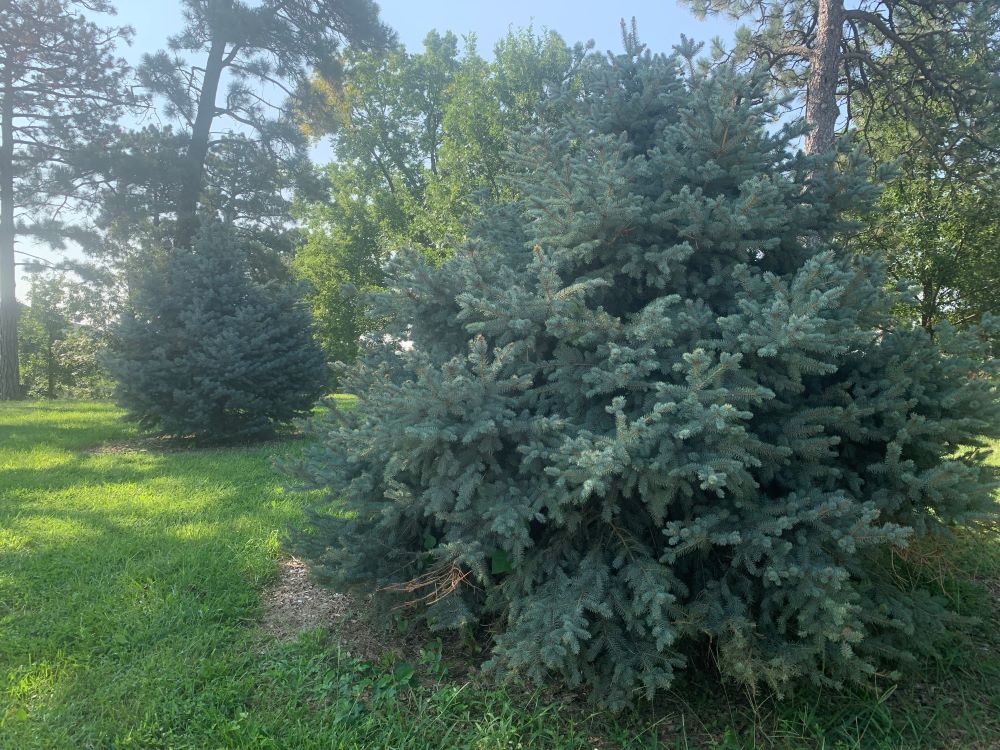Colorado Blue Spruce
 Picea pungens, or the Colorado Blue Spruce is a conifer species whose native range is limited primarily to the southern extent of the Rocky Mountains of the western U.S. While it is not native to Kansas, it has been planted extensively in residential landscapes for many years. Mature specimens can be found throughout the state, though they are usually limited to individual specimen type plantings. In its' native range, P. pungenscan achieve heights of more than 100 feet under ideal circumstances, but it is unlikely to grow to such heights in Kansas, where specimens exceeding 50’ are uncommon.
Picea pungens, or the Colorado Blue Spruce is a conifer species whose native range is limited primarily to the southern extent of the Rocky Mountains of the western U.S. While it is not native to Kansas, it has been planted extensively in residential landscapes for many years. Mature specimens can be found throughout the state, though they are usually limited to individual specimen type plantings. In its' native range, P. pungenscan achieve heights of more than 100 feet under ideal circumstances, but it is unlikely to grow to such heights in Kansas, where specimens exceeding 50’ are uncommon.
Leaves, Stems and Fruit
Colorado Blue spruce needles, as the name implies have a blue-green, often silvery appearance and particularly stiff and are typically around ½ to 1” in length. Seed cones appear greenish or violet colored initially and mature to a pale brownish color on maturity, typically reaching lengths around 4-6”.
Use
While Colorado Blue Spruce has been widely utilized in residential landscapes of Kansas for many years, it is not an ideal choice for most conservation plantings due to the often-harsh conditions it encounters in most parts of the state. In the northern-most counties of the Kansas it is more likely to survive as night-time temperatures are typically lower and high night-time temperatures are not favorable for spruce species.
Adaptation and Soil
Colorado Blue spruce is potentially adaptable to the Northern half of the state with medium moisture requirements. While it can grow in a wide range of soils, it does not survive poorly drained sites. It can tolerate hot days but does best in areas with cooler nights. In the higher humidity environments of eastern KS, foliar diseases can be problematic, but it is also prone to desiccation stress during dry and windy spells in the western parts of the state (particularly in the absence of irrigation).
Culture
1-2 year old containerized seedlings are used in conservation plantings. Typically, the seedlings grow very little in height until the second or third year. During the establishment period, supplemental watering and control of competing vegetation will aid survival and early growth. Large, fast growing deciduous trees should be spaced far enough (20 to 40 feet) between rows to prevent shading the spruce.
Pests
Many pest issues can be seen on P. pungens in Kansas, and are likely due to a multitude of factors beginning with poor adaptability. Common issues that can be seen on P. pungens include: spider mites, bagworms, Cytospora canker and Rhizosphaera needle cast.